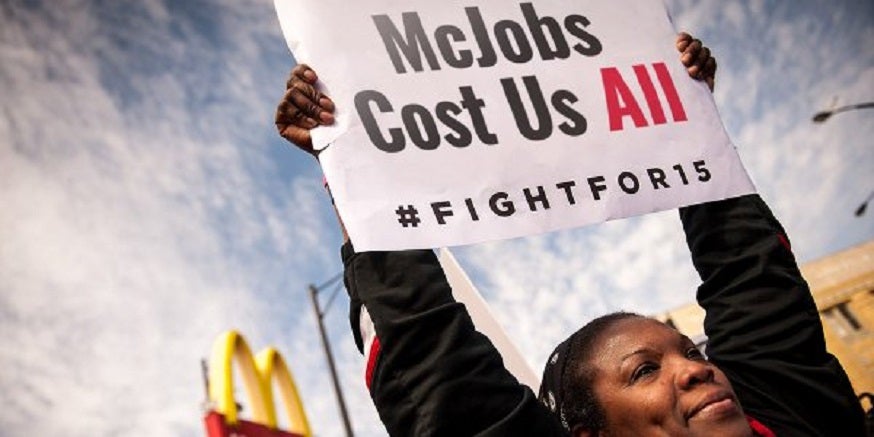Uncategorized
State, Local Governments Lead Wage Hike Charge

Elected lawmakers who oppose minimum wages hikes often belittle their effectiveness. But the more than 5 million workers who saw their pay go up this week due to local and state increases probably see it a lot differently.
The 19 states that raised their wage floors lifted pay for some 5.3 million workers nationally. Some will see their income rise by as much as $2 an hour or $1,300 a year. Eight of the increases reflect automatic adjustments for inflation, while six were due to state laws approved by lawmakers. The final six are the result of ballot measures backed by voters.
Meanwhile, workers in 24 U.S. cities and counties also experienced a wage hike with the dawning of 2019. Taken together, the minimum wage now surpasses the abysmal $7.25 an hour federal standard in 29 states.
The country’s local and state governments are laboratories of democracy and ones where elected officials can fine tune ideas and policies. One of the best that started there is the $15 minimum wage that took off after a handful of cities adopted it.
Seattle stands at the forefront of this experiment, and faced criticism after one report made it seem workers were being hurt by the new policy. But an updated document issued late last year said city residents at the low end of the pay scale were doing better than they were before the minimum wage hike was instituted, even if working fewer hours. And that is not likely to change now that many are making $16 an hour under increases taking effect on Jan. 1.
Of course, Capitol Hill must get involved to fix the wage floor nationally. Although it is likely a difficult lift, House Democrats must lead the push in Congress to raise the federal minimum wage. The spending power of minimum wage earners has fallen 40 percent in the past five decades. As the National Low Income Housing Coalition detailed in a recent report, full-time minimum wage workers would need to work 2.5 full-time jobs in order to afford a one bedroom apartment in most of the U.S.
Meanwhile, corporate America continues to pocket huge profits while hardworking Americans see their paychecks remain flat or worse. While economy boosters like to point to the nation’s low unemployment rate, that doesn’t mean much when workers can’t pay their bills.
Cost-of-living projections show that by 2024 workers nationwide will need at least a $15 an hour full-time job to afford life’s basics. It’s time for Congress to take up legislation that would allow more than 40 million workers to have more money to keep food on the table and a roof over their heads.